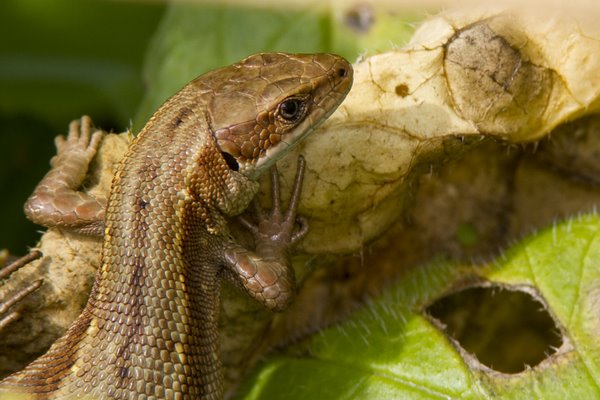
Viviparous Lizard or Common Lizard (Zootoca vivipara, formerly Lacerta vivipara) - Devon, UK
Canon 7D
Canon 300mm F4 IS plus 1.4 x Extender and Canon Extension Tube EF 25 II
1/80
F13
ISO 250
Flash -2 2/3
Tripod
AV Mode dialed -2/3
Text adapted from - http://en.wikipedia.org/wiki/Viviparous_lizard
The viviparous lizard feeds on invertebrates, mostly small insects. It shakes larger prey in its jaws before chewing it and swallowing it whole. In early spring, late autumn, and cool summer days it basks in the sun to reach its optimum body temperature, which is about 30°C.
The lizard mates in April or May. Males take females in their jaws before mating – if the female is not interested, she will bite the male fiercely. The offspring develops for approximately three months inside the female.
The name of the species is derived from its ability to give birth to live young, an adaptation to a cool climate – but some southern populations are oviparous (egg-laying). The 3-10 young (or eggs) are usually produced in July. The blackish young measure about 3 cm, and when first born are surrounded by egg membrane, from which they break free after about a day. Males reach sexual maturity at two years old, females at three years old. Individuals from viviparous and oviparous populations may be hybridised, but with significant embryonic malformation (Heulin et al. 1989).
In northern regions viviparous lizards begin hibernation in September or October, underground or in log piles. Hibernation ends about mid-February. Further south the species is active throughout the year.
Ref: Common Lizard
Location: Devon_UK